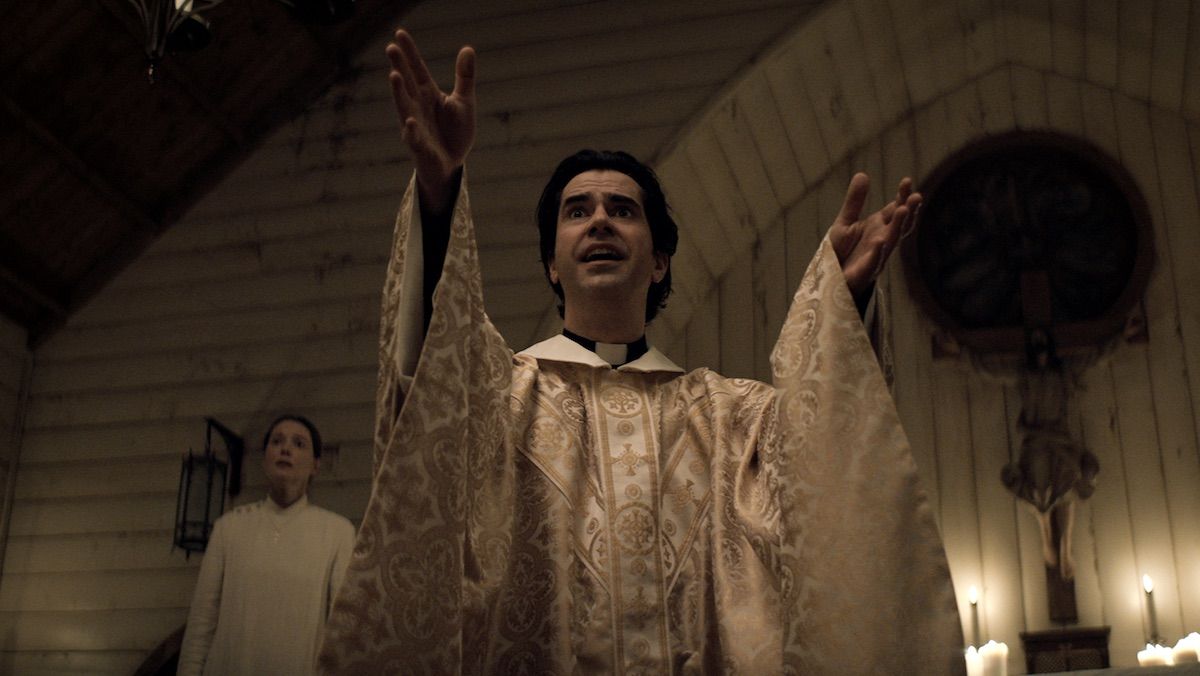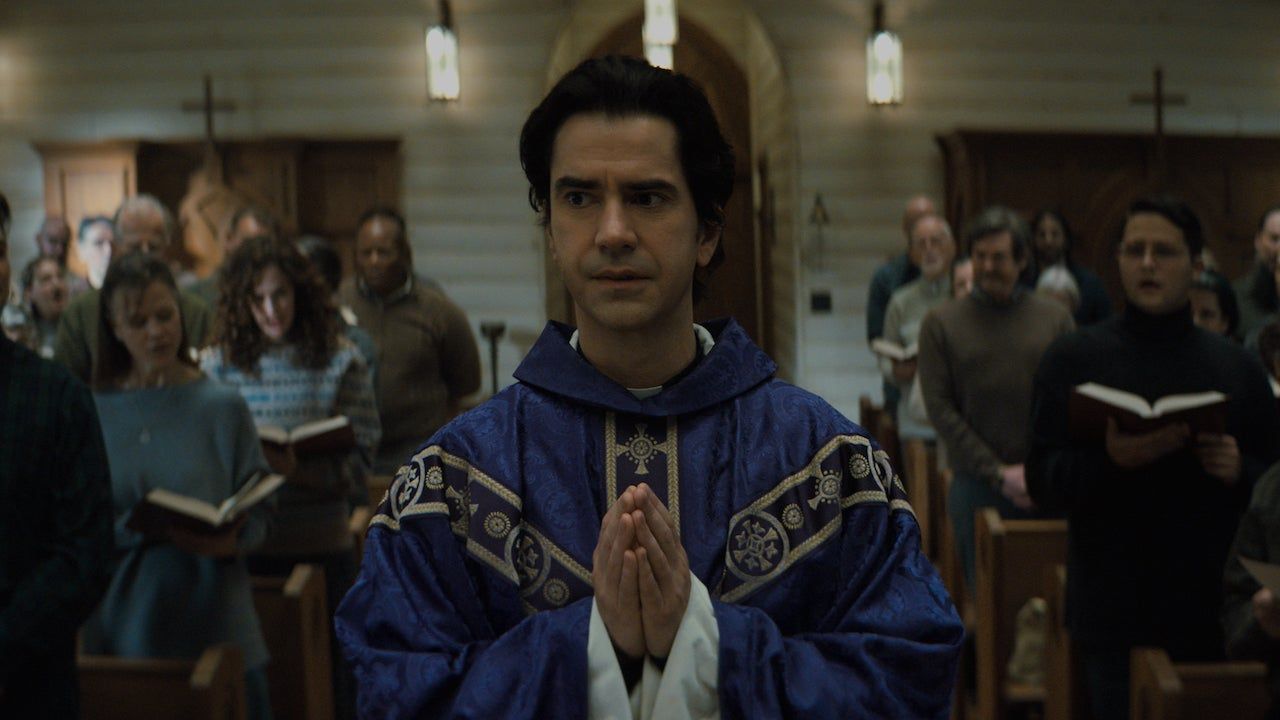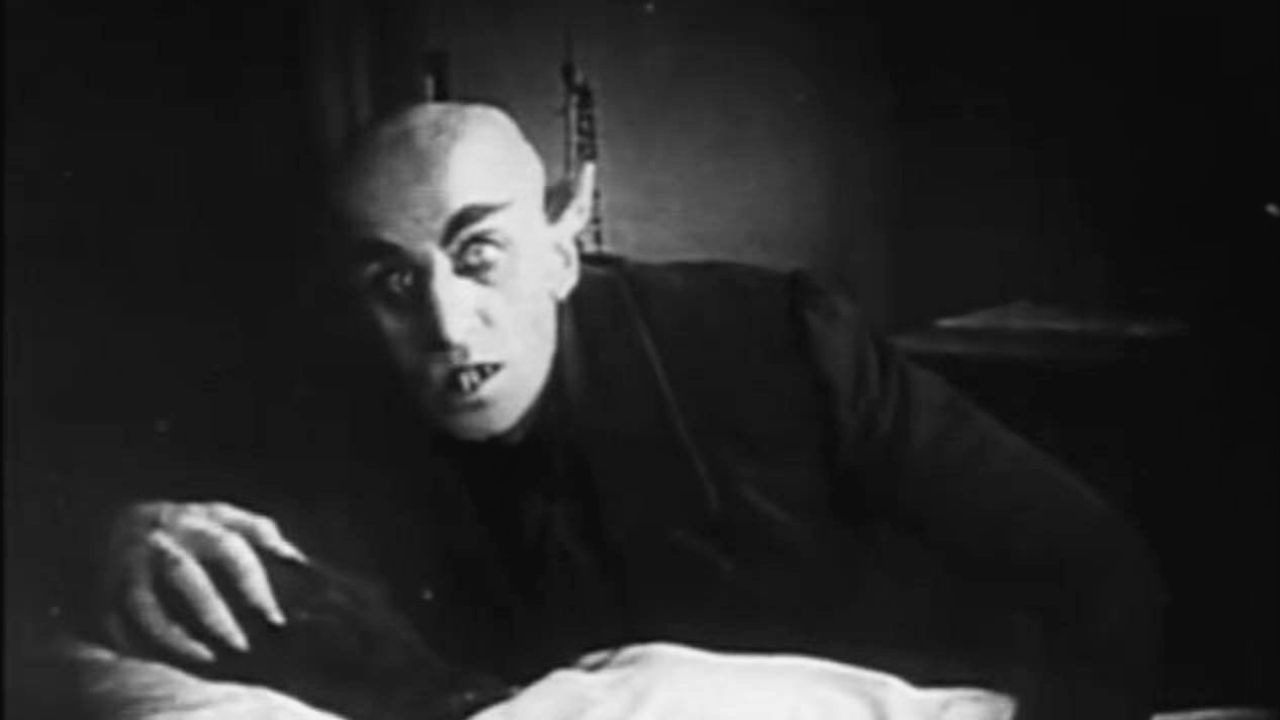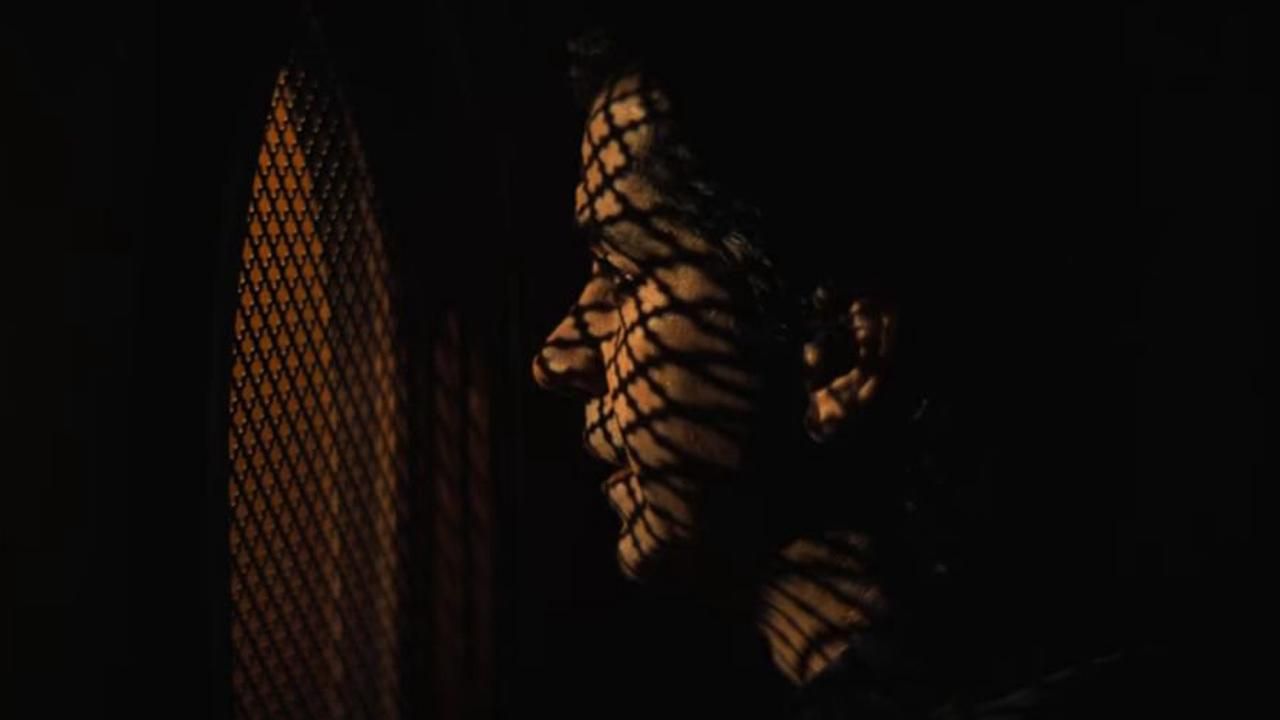Mike Flanagan is one of the most prominent names in the horror genre today. From Stephen King adaptations, such as Gerald's Game and Doctor Sleep, to his original movies like Hush, Flanagan has produced his fair share of iconic horror pieces. His deal with Netflix has led to three excellent horror miniseries: Haunting of Hill House, Haunting of Bly Manor, and Midnight Mass.
His most recent release, Midnight Mass, was delayed — as most productions — due to Covid-19 restrictions. It was supposed to start production in March 2020 but started only in October of the same year. There is no doubt, however, that the wait was worth it, and filming during the pandemic while stuck together on a small island created even more intimacies. It's a heartbreaking, masterful story that built gradually until audiences closed their eyes in fearful anticipation. Flanagan is known for his slow-burn stories - this one is no different.
What is Midnight Mass? The show tells the story of a secluded island that starts to experience miracles after a charming young priest arrives. However, there is always a price for supposed miracles in this broken world, and the town's citizens have to quickly figure out if they are willing to pay or not. Brilliantly using the vampire legend to critique religious extremism and the excuses people give themselves to ease their minds, here is why Midnight Mass was the best horror series of 2021.
A Necessary Story
Flanagan is known for making his characters' drama the most important element, and the horror is used to enhance them and in service of the drama, not the other way around. He does this expertly in Midnight Mass, using the drama to tackle a lot of current issues and also personal battles.
The story starts with Riley, played by Zachary Gilford, sitting on a curb on the street. In front of him: a car crash and a body of a young girl receiving CPR. Riley is drunk and is the reason why all of this is happening; he ends up going to jail because of the drunk driving manslaughter. Flanagan explained that this scenario was his worst fear while struggling with alcohol. Riley then goes back to Crockett Island, where he was once a carefree teenager, and there he has to face both the religion (which was a big part of his life) and people he left behind.
The creator of the show commented in an interview that even though there are a lot of religious elements in Midnight Mass (as there are in many great works of horror), the narrative he wanted to create was about faith itself. Flanagan has said, "It is not a show about religion, is a show about faith itself and how corruptible that can be".
A character who best represents this is Bev, played by Samantha Sloyan, who is the most fanatic Catholic practitioner on the island. Bev witnesses a gruesome murder but quickly finds a meaning as to why that happened in the Bible, justifying the murderous act in a heartbeat. She continues to do this for the rest of the series, twisting the proverbs to fit the narrative she created; in theology, this is called 'proof-texting.' It can be even be inferred that Flanagan was trying to make a point: something evil (for example, the vampire) can be perceived as something heavenly when it helps us get what we want; Bev certainly thought that way.
Faith can be a beautiful thing, but it can also be a reason to have prejudices over other people. Atheists are looked down upon by people like Dev, but so are those of other faiths. The town's new law enforcement is Sheriff Hassan, played by Rahul Kohli, a Muslim who faces a lot of problems with the townspeople because of it.
Midnight Mass is so scary because of just how accurate its representation of fanaticism is. There is no denying that the vampire is scary, but he is the background for unspeakable acts to be justified. Flanagan has said, “I’m fascinated by how our beliefs shape how we treat each other [...] Looking at politics and the world today, so many of us are behaving based on the belief that God is on our side, and that God dislikes the same people we do.”
Clever Use of Vampirism
Flanagan's latest miniseries features a character which we have seen countless times in films, TV, and books: the vampire. However, he does something very different with this blood-thirsty monster that enhances the terror and creativity of the series. He did something extremely clever: there is no indication in the miniseries' trailer that the monster is a vampire. He avoided Midnight Mass being branded as 'that new vampire Netflix series' and used that in his favor. The trailer is intriguing enough to make you want to see the series but does not give anything away from the plot. In fact, the vampirism of the plot doesn't even reveal itself until several hours in, and is all the better and more mysterious because of it. He told the ReelBlend podcast that, "Netflix I think did such a beautiful job marketing the show because they managed to sell the show for exactly what it is without telling you exactly what it is."
Aside from the way Flanagan reveals the vampire (and the ingenious way it is confused with an angel of God), the filmmaker avoids visuals that audiences usually associate with the creatures. It is not a mysterious, tall pale man who comes into town; it is a demonic-looking monster that scares viewers from the get-go. His appearance could be considered a nod to the famous German silent film Nosferatu — which has a very different aesthetic from modern productions of the monster. Also, when someone gets transformed into a vampire, there is no major change in their appearance: only their eyes change. This makes it eerier, because you can't know from afar who was turned and who is still human.
To intelligently enhance Flanagan's previous choices, not once in the series do we even hear the word 'vampire.' He utilizes the elements that give us fear while not having to explain how this creature works (daylight hurts him, he has bat-like behavior, etc.). Flanagan stated that was an intentional effort because, "It's a word that evokes a very specific reaction." He distances it from the traditional connotations of vampirism, actually associating it with a divine, heavenly messenger at first before revealing its more terrifying aspects. In this sense, he reinvents the vampire to fit his purposes.
Incredible Cinematography
It is no surprise that Flanagan cares about cinematography. This element is very clear from his previous movies and miniseries. The low saturation present in Midnight Mass enhances the violence of the dark red of the blood, especially when it is spilled against the background — which happens various times in the series. The low saturation makes the blood even more disgusting due to the color contrast. It almost hurts to look at it, because the audience gets accustomed to seeing only sepia colors in the beach-side town.
The use of various wide shots makes the viewer uneasy even if they don't understand why. As viewers, we are used to being shown exactly where and what to look. So, when we have an open shot, it urges us to look at the edges of the frame; and Flanagan is known for placing ghosts in hidden locations. That search for where to look and what to pay attention to makes the audience instantly nervous.
Also, the shots are usually not very well lit on purpose. There are very few focal points of light, like the candles in the church. Because of this, there are a few spots in the framing which are completely dark. That is a technique called 'negative space,' and its main goal is to unsettle the viewers because they can't see what lurks in the dark. He does this a few times when the monster first arrives at the island: we only hear his movement and see his glowing yellow eyes.
Directorial Choices that Enhance the Terror
Every directorial choice he makes helps enhance the sense of dread, emotion, and terror for the audience. One in particular has its roots in one of his most popular miniseries: The Haunting of Hill House. Episode six of The Haunting of Hill House, called "Two Storms," shocked the audience with its incredibly difficult long shots with multiple actors and scenic locations with no cuts. The longest shot in the episode had the duration of seventeen minutes.
The abrupt editing that usually comes from changing the camera position gives the audience a faster pace of the scene; as such, viewers are accustomed to scenes being quicker than if there were no cuts. Because of that, Flanagan's lengthy single shots without editing force the audience to sit and watch in real-time what is happening - and that can be extremely unsettling due to the high stakes these scenes have, thanks to the drama Flanagan has created through his characters.
In Midnight Mass, the scenes are much shorter. However, there is a seven-minute scene with no cuts at the beginning of episode two, "Book II: Psalms." This external shot at the beach had a lot of technical difficulties, such as the clouds that would change the lighting and the ocean that would carry the props (hundreds of dead cats) away from the scene. The realism of a small town getting together once a strange event happened was enhanced by the absence of cuts and made the scene tenser, following the characters in real-time as they comb the beach in confusion. This can also be seen when the characters sit down and talk, especially the scenes between Riley and Father Paul Hill, played by Hamish Linklater. Linklater also makes the show a must-watch — he does an incredible job playing the priest everybody loves, and balancing the genuine compassion of the character with his tragic misunderstanding of the evil that's right in front of him.
A gripping story from beginning to end, combined with technical excellence and theological provocation, Midnight Mass was undoubtedly the best horror series released in 2021. What's next for Mike Flanagan? The director is currently filming his new miniseries, The Fall of the House of Usher, which adapts the father of horror short stories, Edgar Allan Poe. He's also bringing Midnight Club to Netflix, starring Nightmare on Elm Street icon Heather Langenkamp. If these are only half as good as Midnight Mass, they'd still be pretty great.




